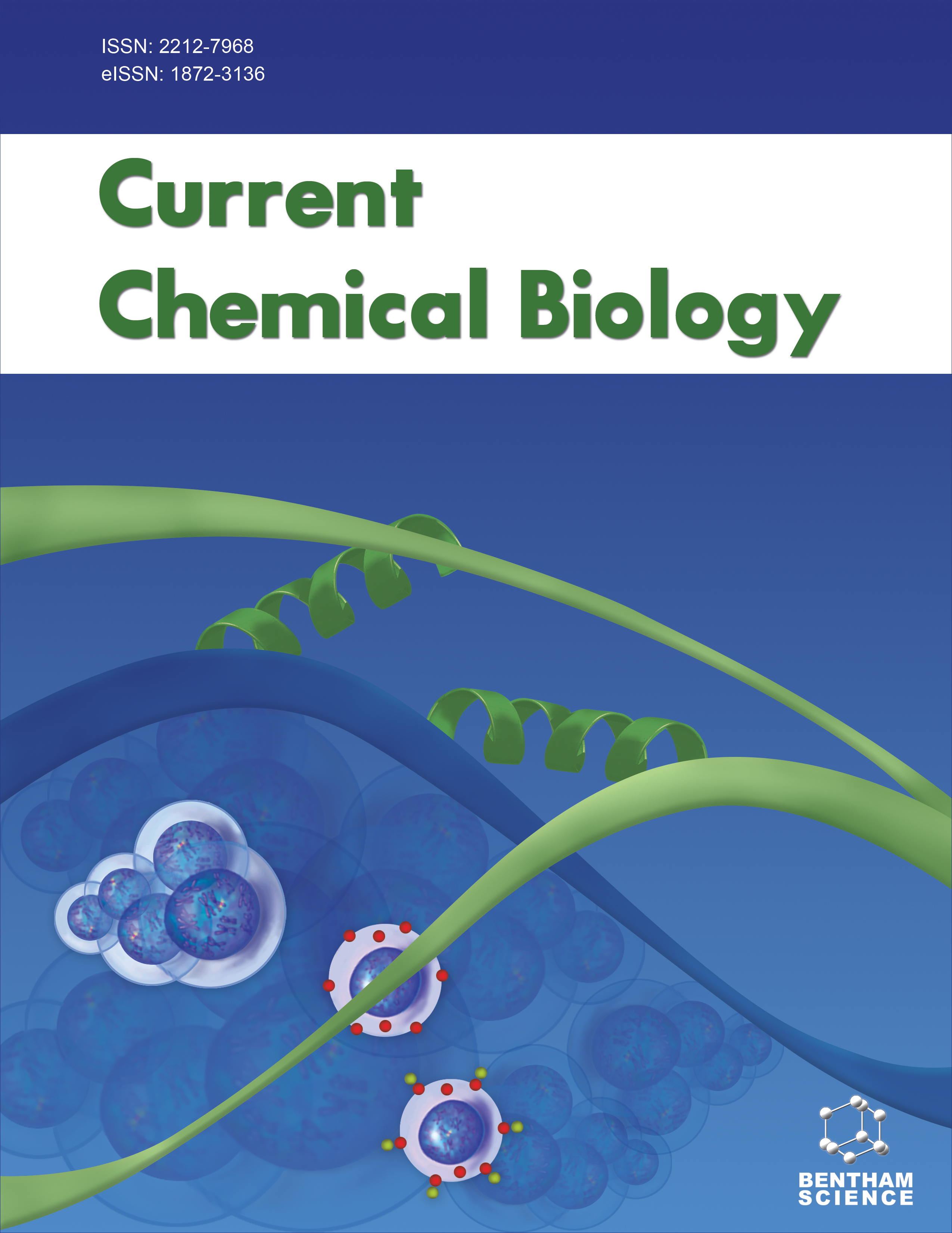- Home
- A-Z Publications
- Current Chemical Biology
- Previous Issues
- Volume 6, Issue 3, 2012
Current Chemical Biology - Volume 6, Issue 3, 2012
Volume 6, Issue 3, 2012
-
-
Plastid Structure, Diversification and Interconversions I. Algae
More LessDuring evolution, different heterotrophic organisms have acquired photosynthetic prokaryotes to transform them into their “tiny green slaves”, the chloroplasts. During endosymbiogenesis plastids have partially lost their independence, and tight co-regulation between the host nucleus and the organelle has been developed. In this work, the general features and the special characteristics (such as plastid morphology, number of Read More
-
-
-
Plastid Structure, Diversification and Interconversions II. Land Plants
More LessAuthors: Katalin Solymosi and Aron KeresztesIn the course of endosymbiogenesis, the photosynthetic prokaryotes engulfed and retained by different heterotrophic organisms have partially lost their independence during evolution and became semi-autonomous organelles, the chloroplasts. The chloroplast represents the most ancestral form of plastids that has parallelly evolved in several algal groups (reviewed in [1]) and in land plants. After briefly discussing plastid mor Read More
-
-
-
Plastid Membrane Lipids in Stress and Development
More LessAuthors: Henrik Tjellstrom and Mats X. AnderssonThe polar acyl lipids which provide the structural basis of all plant cell membranes all contain fatty acids synthesized in the plastid stroma. Fatty acid synthesis in the plastid stroma is also the source of acyl groups used for the synthesis of storage lipids in seeds and other tissues. While the basic biochemistry of fatty acid and glycerolipid synthesis is relatively well understood, the mechanisms for the transport of lipids between org Read More
-
-
-
Plastidal Pathways for Nitrogen Assimilation and the Inhibition of Amino Acid Biosynthesis by Herbicides
More LessThere are many cellular processes occurring in plastids. One of them concerns nitrogen assimilation (nitrate and ammonium). Photosynthesis taking place in the same organelle plays a key role in direct or indirect assimilation of nitrogen. This is involved in the building of the fundamental life molecules: nucleotides, proteins, chlorophyll and numerous other metabolites and cellular components. This review enlightens the m Read More
-
-
-
Mechanisms of Transport Across Membranes in Plant Chloroplasts
More LessAuthors: Cornelia Spetea and Henrik AronssonPlastids represent a family of organelles, which are ubiquitous in all plant cells. They have an outer and an inner envelope membrane, specialized in transport between the cytosol and the stroma. Green plastids (chloroplasts) have an additional internal membrane, named thylakoid membrane, specialized in photosynthetic light-dependent reactions. The envelope and thylakoid membrane of chloroplasts display a selective perme Read More
-
-
-
Photosynthetic Water Oxidation Requires Water Transport Across the Thylakoid Membrane: Are Aquaporins Involved?
More LessAuthors: Azeez Beebo, Benoit Schoefs and Cornelia SpeteaWater supply is crucial for the development and growth of all living organisms. This is especially true for oxygenic photosynthetic organisms (cyanobacteria, algae and terrestrial plants), which use water as a substrate to produce molecular oxygen through the activity of the water-oxidizing photosystem II complex. The precise site of water oxidation is on the lumenal side of the thylakoid membrane, harboring this c Read More
-
-
-
Chloroplasts and Strong Photoprotective Mechanisms
More LessAuthors: Renata Szymanska, Dariusz Latowski and Kazimierz StrzalkaThe exposure of plants to high light in excess of photosynthetic needs causes a reduction in photosynthetic capacity, which is known as photoinhibition. During photoinhibition reactive oxygen species are produced to an extent that leads to the destruction of carotenoids, chlorophyll, protein and to an increase in membrane lipid peroxidation. Plants have developed several strategies to sustain chloroplast functioning u Read More
-
-
-
Improvement of Abiotic Stress Tolerance of Crops Via Enhancement of their Antioxidant Capacity
More LessAuthors: Eva Darko and Beata BarnabasCrops are often exposed to various environmental stresses, such as high and low temperature, drought, increase of field salinity, and metal toxicity. At cellular level, these stresses disturb redox homeostasis and trigger formation of reactive oxygen species (ROS). The improvement of the antioxidant defence system to attenuate the effects of ROS and to maintain the redox balance even under stress conditions may result i Read More
-
Volumes & issues
Most Read This Month
Article
content/journals/ccb
Journal
10
5
false
en


